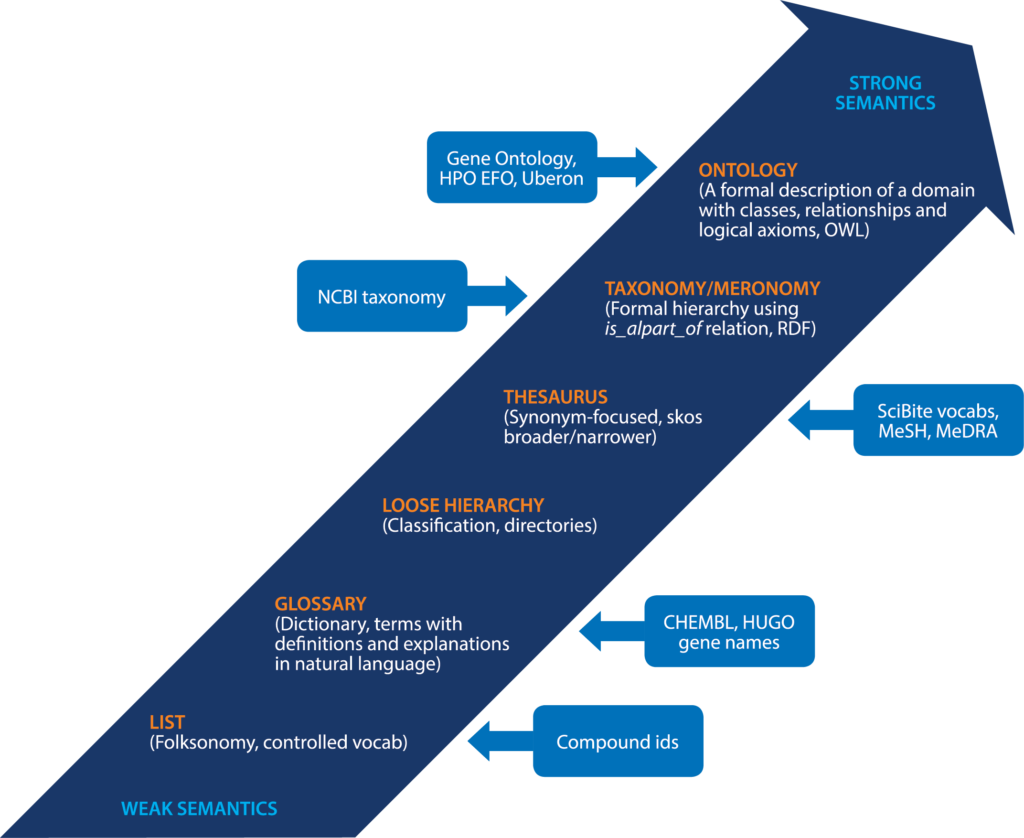The volume of scientific literature being published has increased dramatically in the digital age. Ontologies and taxonomies are important tools to help researchers retrieve and understand this overwhelming amount of scientific literature, but using and managing ontologies can be challenging in itself.
In CCC’s latest white paper, we’re looking at the history of biomedical classification and how these systems have evolved to address new technology and use cases. Click here to download The Evolution and Importance of Biomedical Ontologies for Scientific Literature.
What is the difference between a taxonomy and an ontology?
Ontologies and taxonomies are in many ways similar – they describe types of things, and are arranged in a hierarchical structure.
The way they differ is in their level of formality of their semantic relationships: taxonomies tend to relate classes using only is_a, e.g. kidney is_a organ is_a anatomical structure whereas ontologies use a more expressive set of pre-defined relationships such as part_of, develops_from.
In fact, both systems of description might be thought of as being on a spectrum with increasingly strong semantics, from a collection of terms (tags) to enhance categorization (a ‘folksonomy’), through to an ontology which is a formal logical description of a domain with classes and relationships that operate between them:
Want to keep learning? Check out these resources:
- The Evolution and Importance of Biomedical Ontologies for Scientific Literature
- Keyword vs. Semantic Search
Semantic search in RightFind Navigate provides confidence in comprehensive coverage, to increase the likelihood that critical information is found. Choose from MeSH, SciBite VOCabs or a custom ontology. Learn more here.

